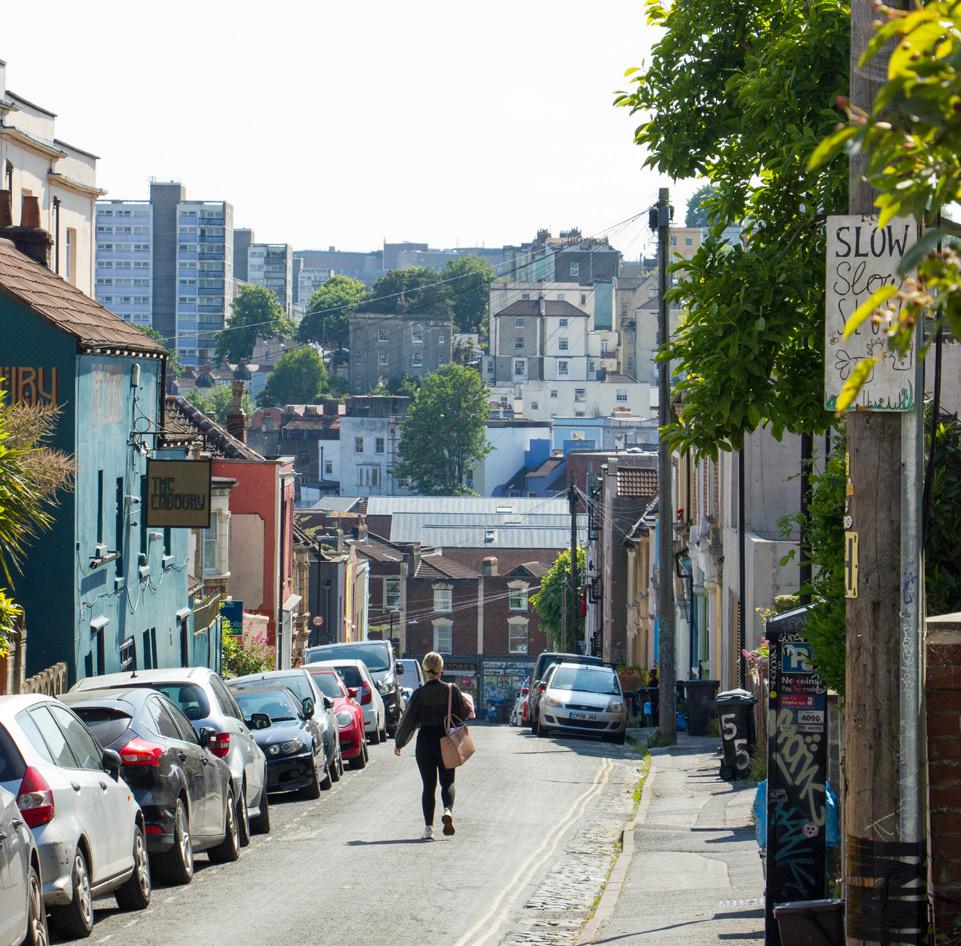
3 minute read
History of Montpelier
written by Paco Mayoral
Why Montpelier is called Montpelier?
Advertisement

“A beautiful view of Bristol and the country can be obtained from Montpelier”. This is the first written evidence we have got of the Bristol´s Montpelier, date from 1793. It was quoted by W. Mathews in his guidebook about the history of Bristol and his suburbs, in which he describes the area as an idyllic quiet place where you can enjoy the spacious open-air swimming baths and the adjoining pleasure gardens. Such a generous description is not trivial, considering that the elevated position, due to the hilly formation, and the reputation of being salubrious is what led us to be identified with the French spa town.
The french medieval city of Montpellier, the original one, was built on two hills, and its modest elevation seemed to give it a healthier advantage. The city eventually boasted a university and a medical school renowned throughout Europe, which may have added to its reputation as a healthful location. As a consequence, the city gained international reputation as a spa town.
Naming a place Montpellier conjured up images of an ideal spot, in the same way that we might name our ideal spot Eden or Shangri-La. Montpellier was an especially fitting name for an elevated location with healthy mountain air. In fact, the bristolian´s Montpelier it wasn´t the only one who want to get associated with the french one, as there are, no more, no less, 150 Montpeliers and Montpelliers around the world. There are Montpel(l)iers in Brighton, Cheltenham, London, Harrogate and Dublin, etc, being some of them directly related to leisure complex.
Yes, I know what you are thinking; one L or two?. Both forms are correct, there is no hard-and-fast rule, and they have been used plenty of times throughout history, being the double L the dominant one tough.
But, there is something that doesn´t add up in this comparation. We have got the hills, but where are the baths?
Montpelier was originated as a suburb of Bristol in the 18th century with detached villas set on the Ashley Down hillside overlooking the Cutlers Mill Brook. This leafy area is where people used to travel from inner Bristol to bathe in the ponds of Montpelier, escape for a while and get a pleasent time not far from the city.
Thats what Thomas Rennison may have tought, because he became the responsible for changing forever the fate of our story.
Native to Birmingham, this threadmaker came to Bristol with an ambition to set up his own factory, although these plans were never realised when he saw the potential of the zone. Bye, bye factory, Bienvenue leisure baths.
The Rennison´s baths were laid out in 1765 and became the first swimming bath of his kind in Bristol. As well as a large cold bath and a smaller one for women, there were dressing rooms, a coffee house, a bowling green and tea gardens. The coffee house was later converted in to a tavern called the Old England, which still exists, being the last survivor of the whole complex. Have you heard about it? ;) the image of an old-fashioned cricketer drawn above the main door. It´s not other than the previousy mentioned Mr. Grace.
The property was passed on through a succession of family members until it was sold with the baths themselves eventually being acquired by the Bristol Corporation for public use in 1892. In 1896 33,231 people are recorded using the facilities, only part of which were heated. Possibly the First World War had an effect on its success for the Baths finally closed in 1916.

Apart from the Old England pub, the only other reference of this glorious past are the Bath Buildings, located right next to the Montpelier Health Center Heath Center, where the baths used to be.
As Bristol expanded in the Victorian period, the suburb was infilled by the streets of terraced housing that we see today.

But the legacy of the baths not only has defined the name of the area but also has built its character and personality. The reputation of being a bohemian place where you can seek all kind of pleasures, that you can feel still today, has the starting point in the times of Rennison´s Grand Pleasure Baths.
Concerts were held there twice a week and Rennison held wild parties knowing that he had nothing to fear from the authorities as the site was outside the city boundary. Some things never change. At the end of the XIX century, the famous cricketer WG Grace used to practice in the nets at the Old E, as is one of the few places that has their own full-size crickete nets. Altough it seems incredible, the nets are still in situ (not the original one of course) and they are used by The Old England Cricket Club. This resolve the mistery about why such an alternative pub nowadays has

